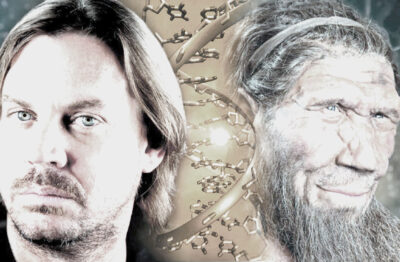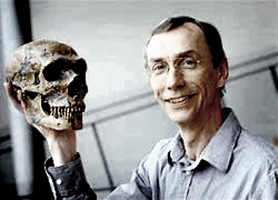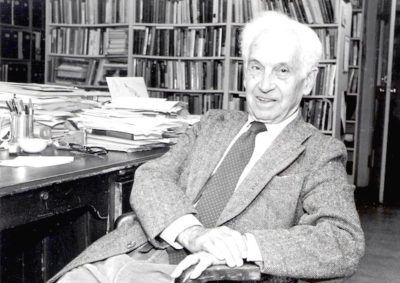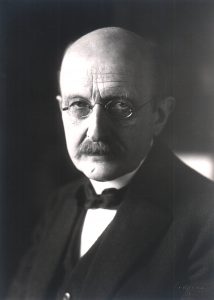 In 1856, just three years before the publication of The Origin of Species by Means of Natural Selection, the first Neanderthal in the fossil record was discovered in the Neander Valley limestone quarry located in Germany.
In 1856, just three years before the publication of The Origin of Species by Means of Natural Selection, the first Neanderthal in the fossil record was discovered in the Neander Valley limestone quarry located in Germany.
In The Descent of Man, Darwin argued against the concept that the Neanderthals were humans’ ancestors based on the Neanderthal skull’s larger size. “Nevertheless,” Darwin noted,
“It must be admitted that some skulls of very high antiquity, such as the famous one of Neanderthal, are well developed and capacious.”
The skull was larger than expected to be a human ancestor. Intuitively, Darwin was right.
The journal Science, on May 7, 2010, published an original research paper headed by Richard E. Green of the Department of Evolutionary Genetics, Max-Planck Institute for Evolutionary Anthropology in Germany. Entitled “A Draft Sequence of the Neandertal Genome,” the study genetically confirmed Darwin’s assertion that the Neanderthal could not be an ancestor to humans.
According to Gregory Hannon of Cold Spring Harbor Laboratory in Laurel Hollow, NY –
“The publication of the full Neanderthal genome is a watershed event, a major historical achievement.”
Svante Pääbo Neanderthal DNA
Svante Pääbo (pictured right) of the Department of Evolutionary Genetics at the Max-Planck Institute for Evolutionary Anthropology in Germany directed the study team. “[They] are not totally extinct,” Pääbo said. “In some of us, they  live on a little bit.”
live on a little bit.”
John Hawks, assistant professor of anthropology at the University of Wisconsin, told BBC News: “They’re us. We’re them.”
“The really surprising thing for many of us,” noted Professor Chris Stringer, research leader in human origins at London’s Natural History Museum,
“is the implication that there has been some interbreeding between Neanderthals and modern humans in the past.”
Bring the findings into perspective, Paul Rincon, science reporter for BBC News, in the article entitled “Neanderthal Genes ‘Survive in Us,” noted –
“The finding has surprised many [evolutionary] experts, as previous genetic evidence suggested the Neanderthals made little or no contribution to our inheritance.”
Darwin’s dilemma intensifies. In an interview with Alan Boyle, science editor of NBC News, Pääbo agrees –
“At first, I thought it was some kind of statistical fluke.”
Defining Species
 This finding is a monumental discovery since interbreeding is a critical factor in defining a species. Ernst Mayr, Darwin’s Bulldog of the twentieth century, developed our modern definition of species.
This finding is a monumental discovery since interbreeding is a critical factor in defining a species. Ernst Mayr, Darwin’s Bulldog of the twentieth century, developed our modern definition of species.
In his 1942 book entitled Systematics and the Origin of Species, Ernst Mayr established the Biological Species Concept (BSC): species consist of populations of organisms that can reproduce with one another and are reproductively isolated from other such populations.
Since humans and Neanderthals have formed isolated reproductive populations, they represent a single species—”They’re us. We’re them.”
Max Planck Institute
The sequencing of the genome at Germany’s Max Planck Institute stands as a landmark scientific achievement. (Max Planck pictured right)
Using advanced “high-throughput” technology, the researchers analyzed and compared DNA sequences from the bones of three different fossils found at Vindija Cave in Croatia.
Darwin’s Dilemma intensifies.
Genesis
The DNA evidence is compatible with the Genesis account; as descendants of Adam and Eve, the Neanderthals are Homo sapiens and not a transitional link; Darwin got it right.
Cellular biologist, David DeWitt, noted that the research was an “amazing feat” of science that continues to demonstrate the validity of the biblical record –
“Finding Neanderthal DNA in humans was not expected by evolutionists, but it was predicted from a creation standpoint because we have said all along that Neanderthals were fully human: descendants of Adam and Eve just like us.”
Evidence from molecular biology underscores why the theory of evolution remains speculative but not scientifically valid.
Darwin, DNA, and the Neanderthals is a Molecular Biology article.
Darwin Then and Now is an educational resource on the intersection of evolution and science, highlighting the ongoing challenges to the theory of evolution.
Move On
Explore how to understand twenty-first-century concepts of evolution further using the following links –
-
- The Understanding Evolution category showcases how varying historical study approaches to evolution have led to varying conclusions. Subcategories include –
- Studying Evolution explains how key evolution terms and concepts have changed since the 1958 publication of The Origin of Species.
- What is Science explains Charles Darwin’s approach to science and how modern science approaches can be applied for different investigative purposes.
- Evolution and Science feature study articles on how scientific evidence influences the current understanding of evolution.
- Theory and Consensus feature articles on the historical timelines of the theory and Natural Selection.
- The Biography of Charles Darwin category showcases relevant aspects of his life.
- The Glossary defines terms used in studying the theory of biological evolution.
- The Understanding Evolution category showcases how varying historical study approaches to evolution have led to varying conclusions. Subcategories include –
2020 Update
Lu Chen, of the Lewis-Sigler Institute for Integrative Genomics, Princeton University, in the paper entitled “Identifying and Interpreting Apparent Neanderthal Ancestry in African Individuals,” published January 2020 in the journal Cell, concludes –
“Our results refine our understanding of Neanderthal ancestry in African and non-African populations and demonstrate that remnants of Neanderthal genomes survive in every modern human population studied to date.”
The WIKIPEDIA page –
“The first Neanderthal genome sequence was published in 2010 [led by Green], and strongly indicated interbreeding between Neanderthals and early modern humans.”
“Neanderthals were depicted as being primitive, stupid, and brutish for much of the early 20th century. Though knowledge and perception of them has markedly changed since then in the scientific community, the image of the unevolved caveman archetype [sadly] remains prevalent in popular culture.”
While not mentioning inbreeding, the site concludes –
“In all, approximately 20% of the Neanderthal genome appears to have survived in the modern human gene pool.”
The site does not include relevant information.
The site presents more questions than scientific information.
“We can use the DNA from fossil Neanderthals to approach this and many other questions, such as: What was the relationship between Neanderthals and anatomically modern Homo sapiens? Did Neanderthals and anatomically modern humans interbreed? Did Neanderthals contribute to the modern genome? How much? What do the Neanderthal genes that have been identified in the modern human genome actually do?”


